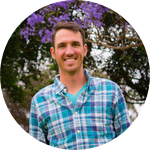About This Project
Kelp forests are a prominent feature along the world’s coastlines in temperate and subpolar regions. However, increasing ocean temperatures are threatening the persistence of these highly productive ecosystems. We propose to develop a new method to estimate the density of kelp forests using underwater sound. If successful, this rapid, acoustic-based assessment method could enable the continuous monitoring of the health of these brown macroalgae in the face of climate change.
Ask the Scientists
Join The DiscussionWhat is the context of this research?
Current methods of monitoring kelp forests include using aerial or satellite imagery to map the kelp forest extent or employ diver-based survey techniques. Though these monitoring techniques provide useful data to natural resource managers, the scale of their measurements lie at opposite ends of the spectrum. Satellite imagery helps us understand how kelp forests are changing over large areas (e.g., globally or along an entire coastline), whereas diver-based surveys provide incredibly detailed and nuanced data about kelp forests, but are time consuming, expensive, and impractical to do on a larger scale.
Here, we propose a method to “fill in the gap” - a technique that can provide data about kelp forests at a spatial scale between that of satellite imagery and diver-based surveys.
What is the significance of this project?
Kelp forests are an early indicator system for climate change. Recent marine heatwaves have caused the collapse of many kelp forest ecosystems worldwide. Kelps create dynamic and complex three-dimensional structure used as shelter and habitat for thousands of species. These marine forests also support a variety of economically-valuable coastal fisheries (e.g., Abalone or Kelp Bass).
Kelp density (i.e., the number of kelp plants in a given area) is an important indicator of ecosystem health and quality. Low kelp density has been shown to negatively impact the recruitment, growth and survivorship of kelp and can result in changes to the structure of understory community assemblages. Kelp density can also be used to estimate standing crop and net primary productivity.
What are the goals of the project?
The goal of this project is to conduct a proof of concept experiment to determine if kelp density can be estimated using underwater sound.
We will utilize a controlled underwater source to measure the intensity of sounds along propagation paths with four different kelp densities: no kelp, half-natural, natural and double-natural density. Statistical models will be used to establish a relationship between transmission loss (TL) and kelp density.
It is known that the presence of kelp decreases the sound speed in the water column. From this observation, we hypothesize that the intensity of sounds propagating through a kelp forest will decrease and that the magnitude of TL depends on kelp density.
To our knowledge, no measurements of TL have been made in kelp forests.
Budget
Initial funding will be used to develop a low-cost underwater passive acoustic recorder based on a Raspberry Pi computer and a custom-built signal conditioning board in a Pi HAT footprint. The custom-built recorder will be tested against the SoundTrap four channel acoustic recorder. The design of the acoustic recorder will be open source and available to all on GitHub.
Hydrophones will be purchased from High Tech, Inc. to avoid calibration issues.
Modifications to an already acquired underwater loudspeaker system will be made to enable autonomous deployment in the kelp forest.
This experiment will be conducted near the South La Jolla State Marine Reserve (SMR). It encompasses a biological hotspot that is representative of the marine life and habitat found along the coast of southern California. The kelp forests within this SMR are amongst the most well-studied in the world.
Endorsed by
 Project Timeline
Project Timeline
Engineering work on the design and development of the passive acoustic recorder as well as the modifications to the underwater loudspeaker system is expected to be completed by June 17, 2021.
An exact study site and transplantation of kelp plants to create the four different density paths will be completed by June 25, 2021.
Sensors will be deployed in the kelp forests by June 28, 2021 and retrieved by the end of July, 2021. Acoustic data analysis will occur in August 2021.
Apr 22, 2021
Project Launched
Apr 22, 2021
Project Launched
Jun 03, 2021
Study Site Location Selected
Jun 10, 2021
Modifications to Underwater Loudspeaker for Autonomous Deployment Completed
Jun 17, 2021
Design and Testing of Open Source Passive Acoustic Recorder Completed
Meet the Team
Affiliates
Camille Pagniello
Dr. Camille Pagniello is a MAC3 Posdoctoral Fellow at Stanford Unversity's Hopkins Marine Station. Her research interests lie at the intersection of technology, data science, acoustics, animals, oceanography, conservation and sustainable management of natural resources.
Dr. Pagniello recently completed her Ph.D. in Oceanography (with a Certificate in Engineering Leadership and a Micro-MBA) at Scripps Institution of Oceanography. For her doctoral research, she used passive acoustics and optical imaging to identify the sounds of commercially and recreationally important fish species and to locate their spawning areas within marine protected areas.
Camille completed her BSc Honours, Co-op in Marine Biology and Physics with minors in Mathematics and Ocean Sciences (First Class Honours) at Dalhousie University. During her studies, Camille was an NSERC USRA scholar at Dalhousie and Memorial University of Newfoundland, as well as Summer Student Fellow at Woods Hole Oceanographic Institution conducting research in the fields of computational geometry, atmospheric physics, biological oceanography, avian acoustics and biology, and ocean acoustics. She also completed a semester abroad as part of the SEA Semester Program (S-250) in which she sailed from San Diego, CA to Papeete, Tahiti and conducted marine chemistry research.
Camille has been an active member of the Marine Technology Society (MTS) since 2010, The Oceanography Society (TOS) since 2015, and the Acoustical Society of America (ASA) since 2017 serving in multiple leadership positions. She also competed on MUN’s Eastern Edge Robotics team at the 2013 MATE International Remotely Operated Vehicle (ROV) Competition in Federal Way, Washington where she also served as Ocean Career Expo Coordinator. She is AAUS Scientific Diver, and regularly dives for scientific research purposes.
Jack Butler
Jack Butler is a postdoctoral researcher at Florida International University's Institute of Environment. His research focuses on developing and employing low-cost technology to answer marine ecological questions - particularly methods to aid conservation and restoration of coastal habitats. Some of his current projects include developing trap-deployable, long-term camera systems to monitor deepwater traps off the Florida Keys to help remove invasive lion fish, pairing passive acoustic and imagery datasets to identify and monitor ecologically and economically important fish species within Southern California kelp forests, and developing a underwater speaker system to augment hard-bottom habitat restoration efforts in the Florida Keys.
Jack received his BS in Zoology from the University of Florida, where he worked as a research technician in the salt marshes of coastal Georgia. There he found his love of marine science and decided to pursue his PhD in Ecological Sciences from Old Dominion University. His dissertation research focused on the role that marine soundscapes play in the recruitment of larvae to back-reef hard-bottom habitats of the Florida Keys, and how habitat degradation and restoration alter these processes.
Project Backers
- 47Backers
- 71%Funded
- $7,014Total Donations
- $149.23Average Donation



